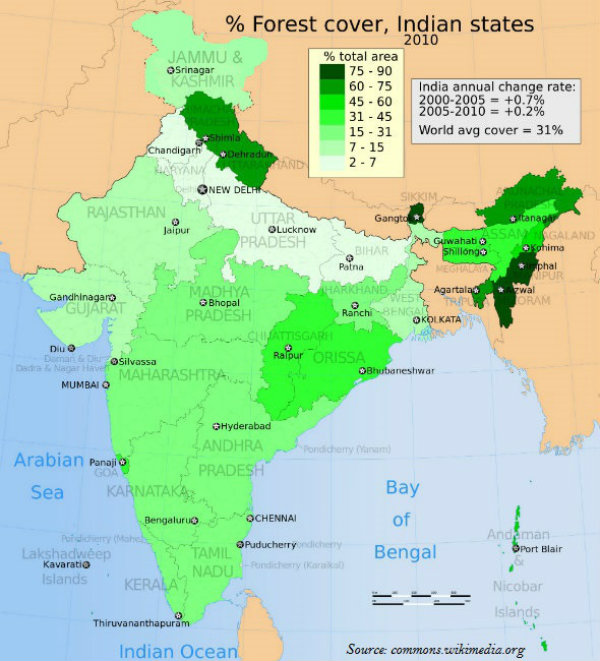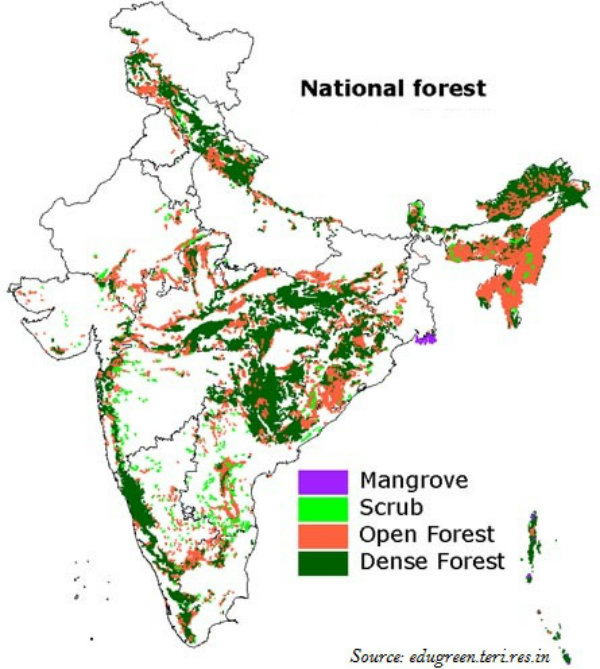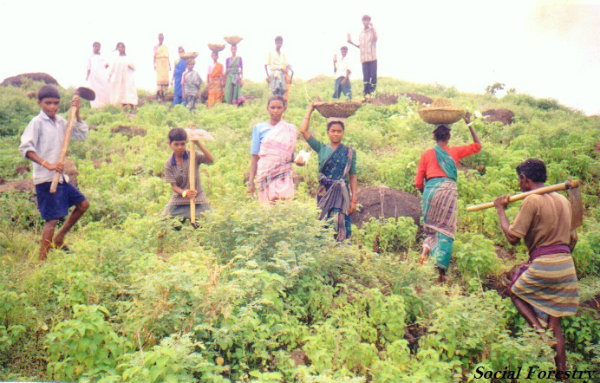Introduction

- According to the India State of Forest Report 2011, the actual forest cover in India is 21.05%, of which, 12.29% are dense forests and 8.75% are open forests.
- Andaman and Nicobar Islands have 86.93% forest area; on the other hand, Lakshadweep has zero per cent forest area [details of forest cover (state-wise) shown in the image given below].
- With (about) 90 percent of forest cover, Mizoram has the highest percentage of forest area in India.
- Haryana, Punjab, Rajasthan, Uttar Pradesh, Bihar, and Gujarat have less than 10 percent area under forest cover.
Category of National Forest

- As shown in the map given below, national forest is broadly categorized as Dense Forest, Open Forest, Scrub, and Mangrove.
- Currently, there are 102 National parks and 515 wildlife sanctuaries. These collectively cover an area of 15.67 million hectares of India.
- The Government of India proposed to have a nation-wide forest conservation policy, and adopted a forest policy in 1952, and further amended in 1988.
- Out of a total of 593 districts, 188 districts have been identified as tribal districts.
- The tribal districts account for about 59.61% of the total forest cover of India, whereas the geographical area of 188 tribal districts constitutes only 33.63% of the total geographical area of India.
Social Forestry
- For the forest conservation and increase the forest area, the concept of Social forestry has been introduced.

- Social Forestry means the management and protection of forests and afforestation on barren lands with the purpose of helping in the environmental, social, and rural development.
- Further, in 1976, The National Commission on Agriculture has classified social forestry into three categories i.e. Urban forestry, Rural forestry, and Farm forestry.
- Farm forestry is a term applied to the process under which the farmers grow trees for commercial and non-commercial purposes on their farm lands.

No comments:
Post a Comment